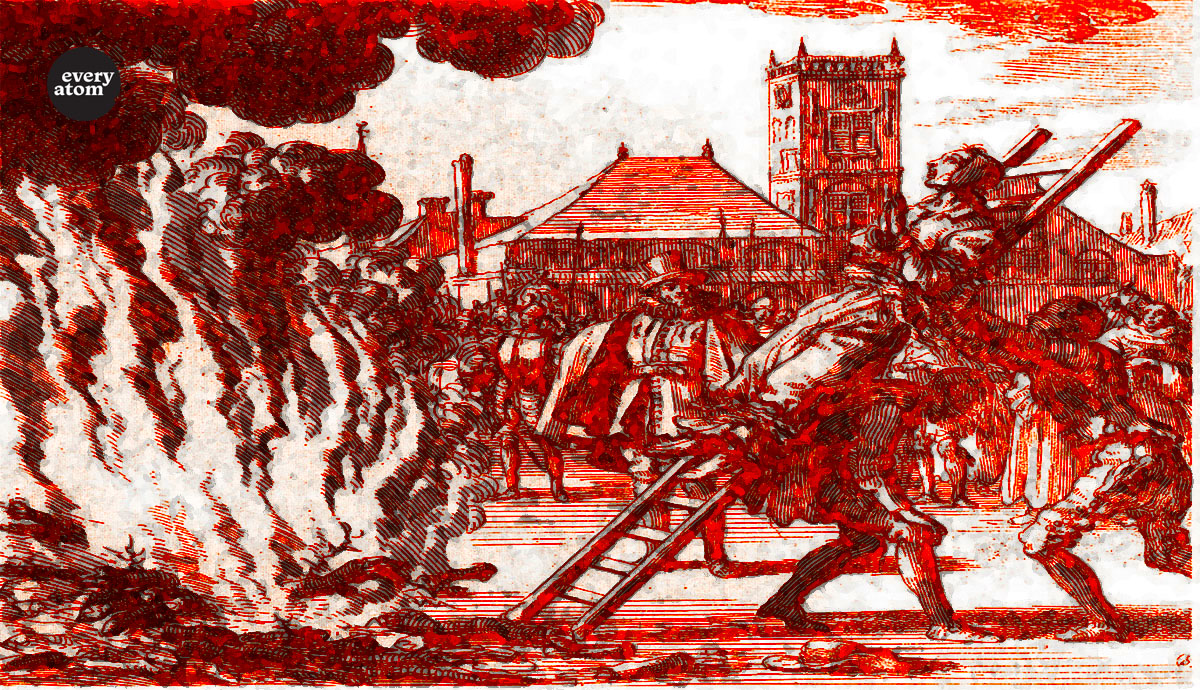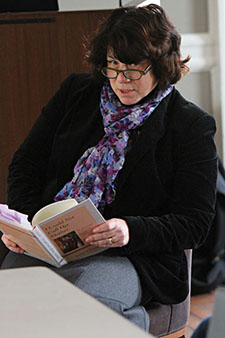Every Atom | No. 55
Introduction to Every Atom by project curator Brian Clements
In the longest section of “Song of Myself,” Whitman careens from visions of the wild to the tame, the natural to the cultivated. He catalogues a world teeming with human and animal exempla, exuberant, fluid. By the end of the section, however, he enters a world where pain and suffering and death are manifest. This is the land of the martyrs, the “mother condemned for a witch” and the “hounded slave.”
By the nineteenth century, the most common literary and popular reaction to North America’s seventeenth-century Puritan past was disdain, the disdain echoed in Whitman’s description of the martyrs themselves. Scores of essays, newspaper articles, chapbooks, novels and short stories—the most famous of which included Nathaniel Hawthorne’s The Scarlet Letter and “Young Goodman Brown”—portrayed Puritan elders as suspicious, spiteful, and ignorant. According to nineteenth-century journalist and author William Leete Stone, Puritans were “involved in a gloom of ignorance deeper and darker than the untraversed forests chosen for their homes.” Common antebellum representations painted Puritan elders and gullible townspeople as responsible for fomenting tensions that resulted in the accusation, trial, and execution of innocent women and men wrongfully accused of witchcraft. (Though witchcraft was according to law a genderless crime, approximately 75% of those accused, tried, and executed for witchcraft were women.) That Whitman’s martyred witch is a mother, “burnt with dry wood and her children gazing on” reflects the particular injustice of witchcraft persecution, shattering as it did the sacred bonds of motherhood.*
Whitman couples the martyrdom of the seventeenth-century witch with the martyrdom of enslaved people, victims of “the murderous buckshot and the bullets” intended to prevent their escape. Brutalized and murdered, “hounded” both literally and figuratively, the enslaved were martyrs to the cause of freedom and liberty. Whitman’s Leaves of Grass appeared less than a handful of years after Harriet Beecher Stowe’s novel, Uncle Tom’s Cabin, and a decade after the publication of Narrative of the Life of Frederick Douglass, an American Slave. Those texts among others increased popular attention in the North to the horrors of slavery, challenging the mythology of a nation founded on principles of liberty and justice.
*Note: The punishment for capital crimes in New England in the seventeenth century was hanging. Convicted witches were hanged in New England, not burned.
Recommended
Nor’easter
Post-Op Appointment With My Father
Cedar Valley Youth Poet Laureate | Fall 2024 Workshop







